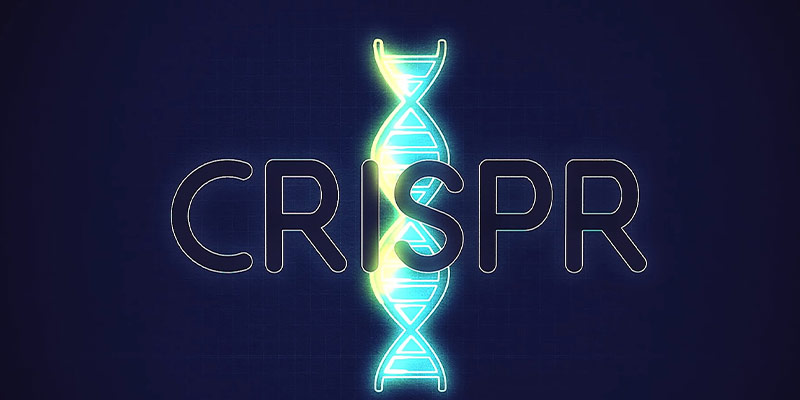- India
- May 05
- Sreesha V.M
ICAR develops genome-edited rice varieties
• Agriculture Minister Shivraj Singh Chouhan unveiled the first genome-edited rice varieties — DRR Rice 100 (Kamla) and Pusa DST Rice 1 — developed by the Indian Council of Agricultural Research (ICAR).
• These varieties have the potential to bring about revolutionary changes in terms of higher production, climate adaptability, and water conservation.
Development of genome-edited rice varieties
• Genome-edited rice varieties have previously been developed in countries like China and Japan, but many have remained in research settings with only a few reaching formal release or commercialisation.
• The two new varieties were developed using genome-editing technology based on CRISPR-Cas, which makes precise changes in the organism's genetic material without adding foreign DNA.
• Genome editing of SDN-1 and SDN-2 types of genes has been approved under India's biosafety regulations for general crops.
• In 2018, ICAR initiated genome-editing research to improve two major rice varieties — Samba Mahsuri and MTU 1010 — under the National Agricultural Science Fund.
The outcome of this research is the two advanced varieties that offer the following benefits:
i) A 19 per cent increase in yield.
ii) A 20 per cent reduction in greenhouse gas emissions.
iii) A saving of 7,500 million cubic meters of irrigation water.
iv) Improved tolerance to drought, salinity and climate stresses.
• The DRR Rice 100 (Kamala) variety was developed by ICAR-IIRR, Hyderabad, based on Samba Mahsuri (BPT 5204).
• Its objective is to increase the number of grains per panicle and it matures 20 days earlier. Due to its shorter duration, it helps save water and fertilizers and reduces methane gas emissions. Its stalk is strong and does not fall. The rice quality is similar to the original variety — Samba Mahsuri.
• The second variety, Pusa DST Rice 1, was developed by ICAR-IARI, New Delhi, based on MTU 1010. This variety can increase yields by 9.66-30.4 per cent in saline and alkaline soils, with the potential for up to 20 per cent increase in production.
• These varieties have been developed for states such as Andhra Pradesh, Telangana, Karnataka, Tamil Nadu, Puducherry, Kerala, Chhattisgarh, Maharashtra, Madhya Pradesh, Odisha, Jharkhand, Bihar, Uttar Pradesh, and West Bengal.
• Cultivation of both varieties across 5 million hectares could produce an additional 4.5 million tonnes of paddy.
• The development of these varieties is a significant step toward India’s goal of becoming a developed nation and promoting sustainable agriculture.
• These genome-edited rice varieties represent a major advancement in India's agricultural biotechnology, offering practical solutions to the dual challenges of climate change and food security.
• They also demonstrate the potential of genome editing for future crop improvement programmes.
• In the 2023-24 Budget, the government of India allocated Rs 500 crore for genome editing in agricultural crops.
• ICAR has already initiated genome-editing research for several crops, including oilseeds and pulses.
What is genome editing?
• In 1953, J.D. Watson and F.H.C. Crick reported the molecular structure of DNA. Ever since, scientists have tried to develop technologies that can manipulate the genetic material of cells and organisms.
• Genome editing, also called gene editing, is a method for making specific changes to the DNA of a cell or organism.
• Genome editing can be used to correct, introduce or delete almost any DNA sequence in many different types of cells and organisms.
• While techniques to modify DNA have existed for several decades, new methods have made genome editing faster, cheaper and more efficient.
• In 2020, Emmanuelle Charpentier and American Jennifer Doudna won the Nobel Prize in Chemistry for developing a method of genome editing likened to molecular scissors — CRISPR/Cas9.
• CRISPR is short for Clustered Regularly Interspaced Short Palindromic Repeats. CRISPR was adapted for use in the laboratory from naturally occurring genome editing systems found in bacteria.
• With the discovery of the RNA-guided CRISPR/Cas9 system, an easy and effective method for genome engineering has now become a reality. The development of this technology has enabled scientists to modify DNA sequences in a wide range of cells and organisms.
• Genomic manipulations are no longer an experimental bottleneck. Today, CRISPR/Cas9 technology is used widely in basic science, biotechnology and in the development of future therapeutics.
• Because CRISPR/Cas9 is an RNA-based system, it can be more efficiently and easily modified than the protein-based approaches and allows for targeting of multiple sites.
(The author is a trainer for Civil Services aspirants.)


